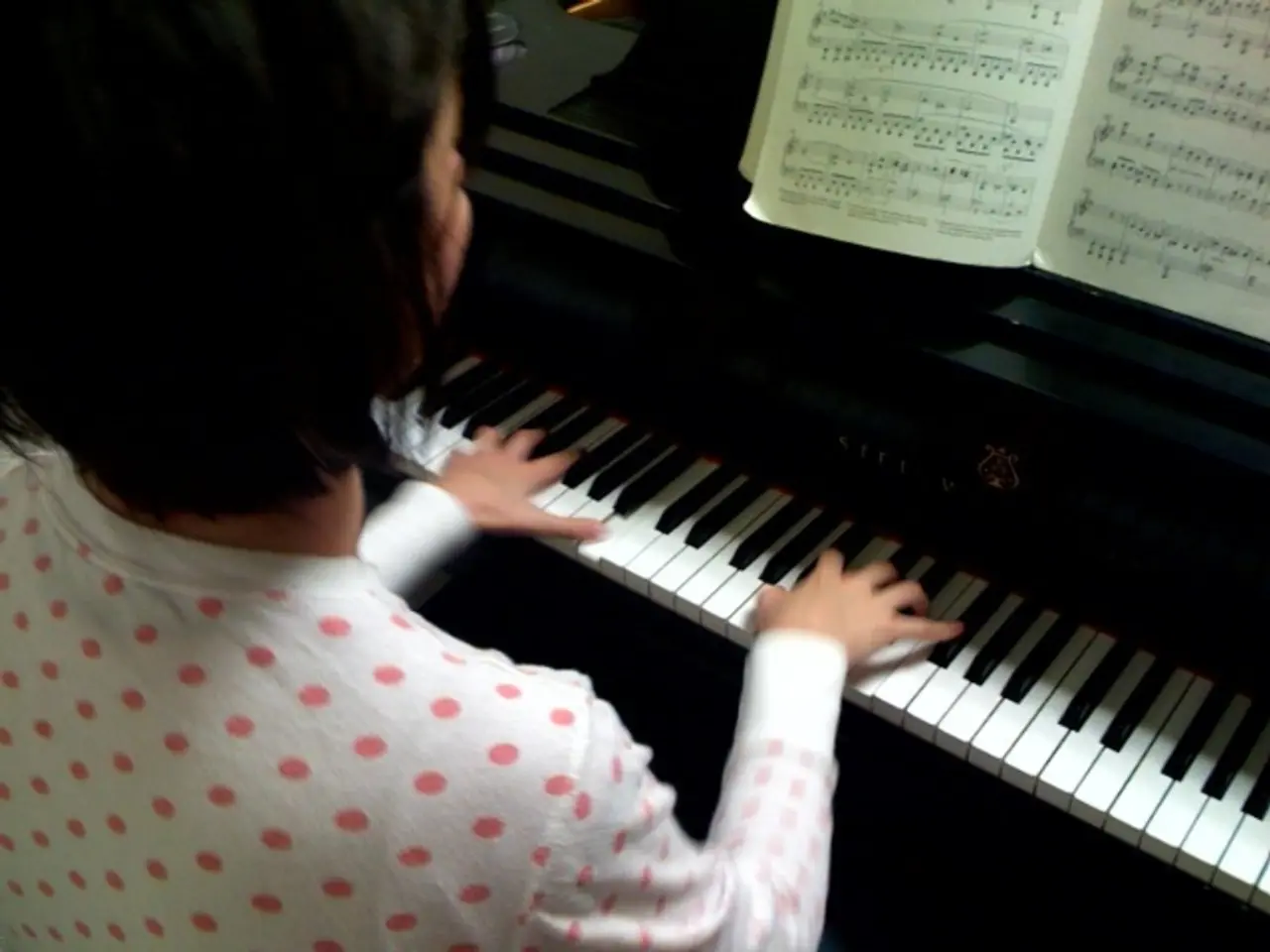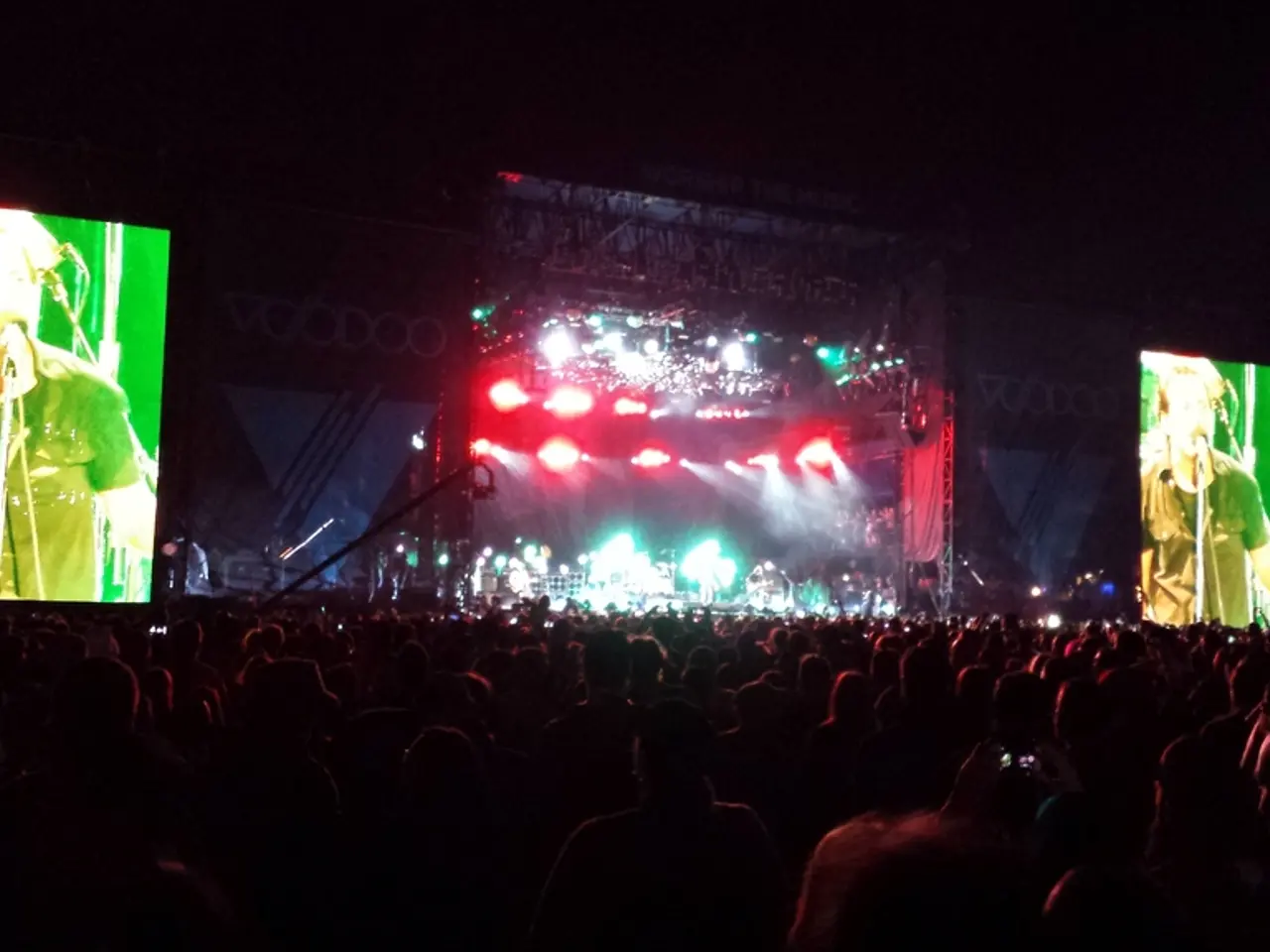Methodsfor Enhancing Piano Scale Exercises
Scales are an integral part of piano practice, playing a crucial role in developing finger dexterity and strengthening muscle memory. This article provides a step-by-step guide on how to practice and improve piano scale fingering using repetition, visualization, and kinaesthetic grouping methods.
Repetition
Regular practice is key when it comes to mastering piano scale fingering. Start by practicing scales slowly, focusing on consistent finger movements. Repetition builds finger strength, precision, and muscle memory, which are essential for smooth fingering. As you gain control and comfort, gradually increase the tempo [1].
In addition to scales, exercises like Hanon or arpeggios can help strengthen finger independence and dexterity [1].
Visualization
Before playing, mentally visualize the scale finger pattern and hand movements. Picture which fingers operate on which keys and the sequence of finger crossings or position shifts. Focus on particular "pivot points," such as where the 4th finger plays a critical note in each octave, and memorize these positions to anticipate movements better [3].
Visualization helps embed the fingering pattern in your brain, allowing smoother execution during actual playing [3].
Kinaesthetic Grouping
Break the scale into hand position groups or small finger clusters rather than single notes. Practice these “chunks” so your fingers learn natural motion patterns as a unit. Feel the physical sensation of these groupings — the stretch, finger crossings, and wrist adjustments — to develop body awareness and fluidity in fingering [3].
For example, memorize and practice how your thumb crosses after black notes or how fingers 1 and 5 prefer white notes in certain scales, which align with natural hand shape and improve efficiency [3].
Combining Methods
Combine these methods by using slow, repeated practice of scales focusing on correct fingerings (repetition). Mentally map and memorize finger placements and key points (visualization). Group sequences into natural hand “chunks” and focus on the physical handling of these groups (kinaesthetic grouping).
This approach strengthens finger independence and speed, reduces mistakes, and builds muscle memory for accurate and effortless scale playing [1][3].
Advanced Techniques
Playing scales with different articulations (e.g. legato and staccato) can help with memorization and musical expression. Scales with varied dynamics (e.g. loud and quiet) can help with expression and control [1].
Playing scales with a jolted, swung, or syncopated rhythm can help with musicality and technique. For further study on rhythmic techniques for piano scales, refer to the article "How to play major Scales" available at [website link] [2].
Conclusion
Piano scales are not just a technical exercise; they provide a logical thought process for executing notes in a piece of music. Regular practice, visualization, and kinaesthetic grouping can help transform technical aspects into instinctual movements, making your piano playing more fluid and expressive.
Scales are a useful warm-up before a concert, and their mastery is often necessary for some music pieces [3]. So, practice diligently, and soon you'll find your fingers nimble and your playing precise and musical.
[1] How to Practice Scales: Techniques and Tips for Pianists. (n.d.). Retrieved from https://www.pianoworld.com/articles/articles/howtopracticescales.html
[2] How to Play Major Scales. (n.d.). Retrieved from https://www.musicteoria.com/lessons/123/major
[3] Piano Fingering: A Complete Guide to Scales and Arpeggios. (n.d.). Retrieved from https://www.pianolab.com/blog/piano-fingering-complete-guide-to-scales-and-arpeggios/
A beginner might find piano lessons challenging due to the intricate technique required for piano scale fingering. visualizing the scale finger pattern and hand movements can help embed the fingering pattern in the brain, allowing smoother execution during actual playing. Additionally, breaking scales into hand position groups or small finger clusters can help develop body awareness and fluidity in fingering. Practicing these "chunks" facilitates the natural motion patterns of the fingers, aiding in the mastery of piano scales.







